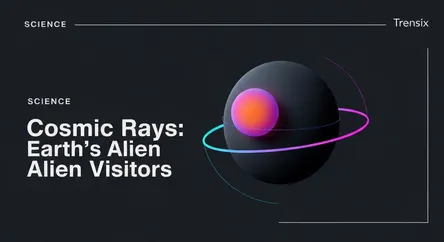Science
Cosmic Rays: Earth's Alien Visitors

Discover cosmic rays: high-energy particles from space that bombard Earth, impacting technology, life, and our understanding of the universe.
What is it?
Cosmic rays aren't rays at all, but highly energetic atomic nuclei and subatomic particles, primarily protons, that travel through space at nearly the speed of light. Originating from sources like our Sun (solar cosmic rays), distant supernovae, and active galactic nuclei, these particles constantly bombard Earth's atmosphere. When they collide with atmospheric atoms, they create a shower of secondary particles that can reach the ground. Their immense energy far exceeds what can be produced in any particle accelerator on Earth, making them a natural laboratory for high-energy physics.
Why is it trending?
Interest in cosmic rays is surging due to new discoveries and technological applications. Advanced observatories like the Pierre Auger Observatory and IceCube Neutrino Observatory are getting closer to pinpointing the mysterious origins of the most powerful cosmic rays. Scientists are also exploring their connection to phenomena like lightning strikes and cloud formation. Furthermore, a technique called muon tomography, which uses the secondary particles from cosmic rays, is being used to non-invasively scan large structures, from pyramids to volcanoes and even nuclear reactors.
How does it affect people?
Cosmic rays have a direct impact on both technology and life. They pose a radiation risk to astronauts in space and airline crews on high-altitude flights. These particles can also cause 'single-event upsets' in electronics, leading to data errors in satellites and even ground-level computers. On the other hand, their interaction with the atmosphere creates carbon-14, the isotope essential for radiocarbon dating ancient artifacts. By studying them, we gain invaluable insights into the most violent and energetic events happening across the cosmos, pushing the boundaries of our knowledge.